Plants
Living, growing plants distinguish landscaping from all other trades. As plants grow, the intent of the designer is revealed and the garden takes on its unique personality. Planting design considers the height, width, form, texture, color, longevity, hardiness, water needs, and maintenance requirements of each plant to be used.

Flower color is so seasonal. Ah, summer....
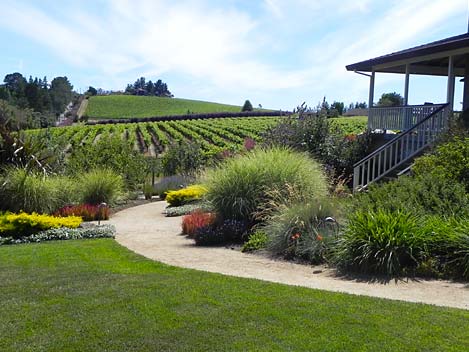
Wine country vistas are a stunning backdrop to any landscape. One of the challenges of a country garden is the interface between the manmade and wild areas. Ornamental grasses, because they occur in both settings, are a useful transition plant.
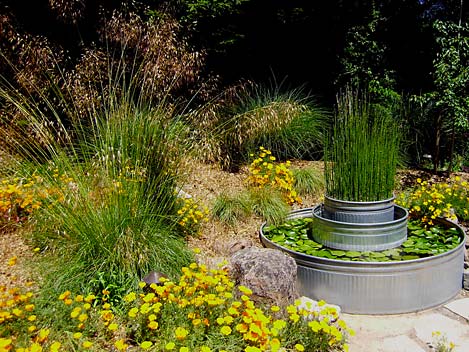
Gunnera tinctora (dinosaur food) is a favorite plant for use near water.
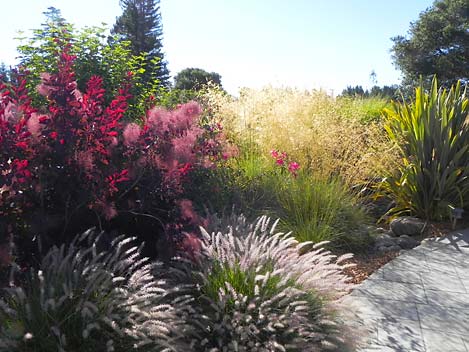
The deep purple foliage of Cotinus coggygria “Royal Purple” (purple smoke tree) is friends with the soft pink blooms of Pennisetum orientale (fountain grass).
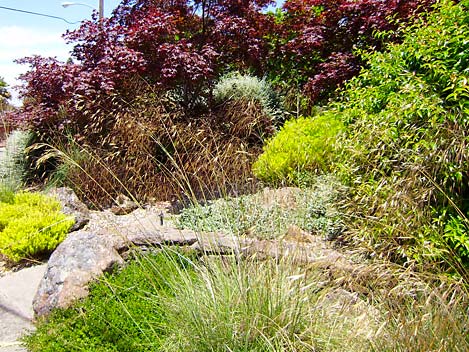
Airy grasses (stipa gigantea – feather grass) veil the view.

Environmentally friendly “no mow” meadows of seeded festuca rubra (creeping red fescue) are an excellent lawn substitute. They use less water and fertilizer than a conventional lawn, all the while (unlike most groundcovers) tolerating considerable foot traffic. Another benefit to a naturalistic grassy meadow is that since there is no mowing needed, furniture or art can be left in place directly upon the grass.
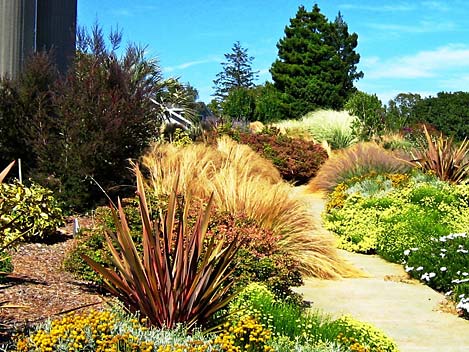
Don't let the words "drought tolerant" and "deerproof" fool you—these gardens can be as beautiful as any other. The landscape in this photograph is just one year old.

A restrained plant palette contributes to a memorable sense of place.

Gardens evolve constantly as trees and shrubs grow. A well-designed, mature garden uses less water, has fewer weeds, and attracts more wildlife than new landscaping.

Yes, you can do "tropical" in Sonoma county, with careful plant selection. Accents like these custom light fixtures help enhance the theme.
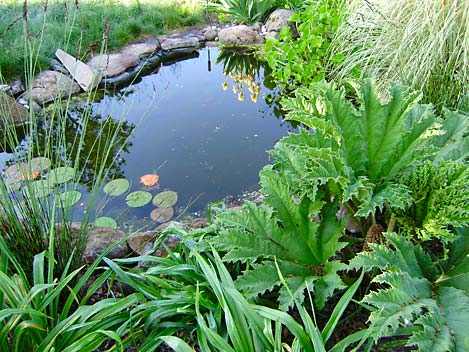
Simplicity is powerful, and timing is everything. Once the poppies are spent, this garden reverts to tranquil retreat.
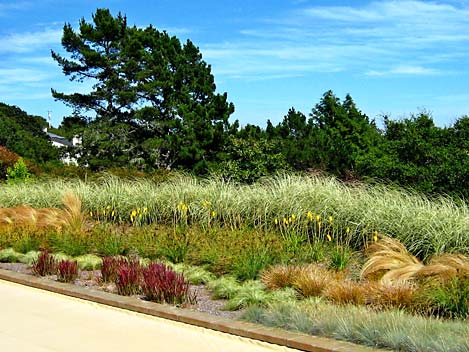
Mass plantings of ornamental grasses in a breezy location provide movement, impact and drama.
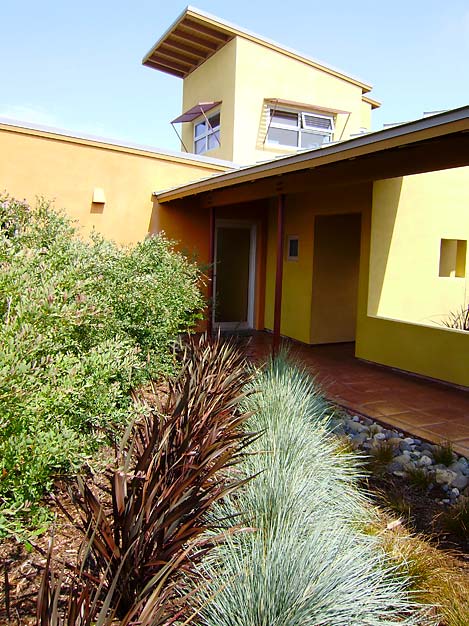
Strong houses demand strong landscapes!
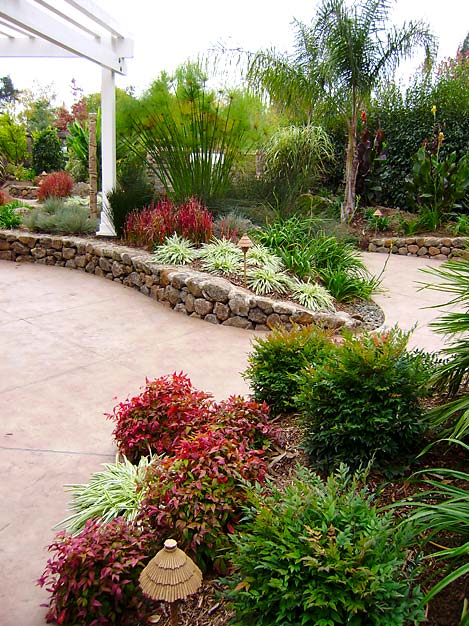
The reds of Nandina compacta (dwarf heavenly bamboo)and Imperata cylindrica (bloodgrass) are offset by Agapanthus “Tinkerbell” (dwarf variegated Lily-of-the-Nile).

Strong bold lines create a unique sense of place. Less is more.
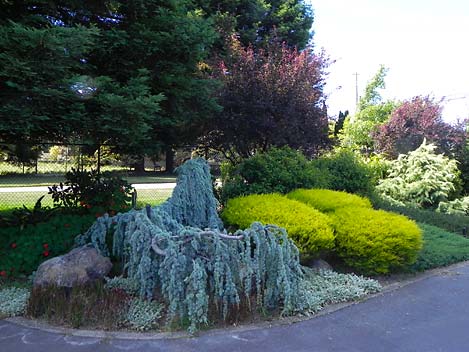
Colored foliage leads your eye down a long driveway.

While formal gardens don’t work for many homes, there are instances in which they can be stunning. This house (neo-Victorian), setting (country estate), and site (circular driveway) all lend themselves well to a formal approach.

More colored foliage in winter.

Color is so precious in January! A good garden designer creates interest twelve months of the year.

A weeping conifer (Cupressus cashmiriana) partnered with a 6’ long boulder.
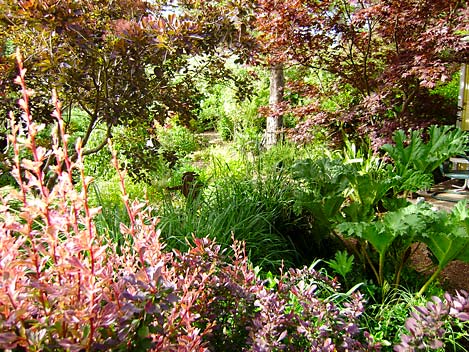
Berberis thunbergii “Rose Glow” (barberry) partners well with Acer palmatum “Bloodgood” (Japanese maple). We buy all our plants from local wholesale nurseries throughout Sonoma county.
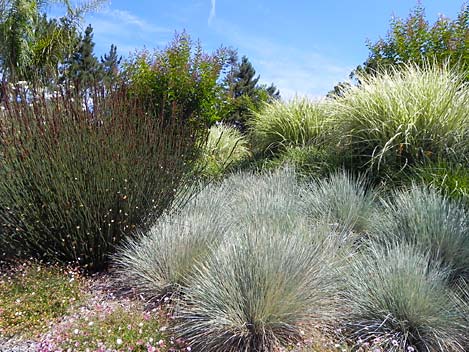
These grasses combine great texture with dramatic foliage color.

Maturity has its compensations, especially in the garden!
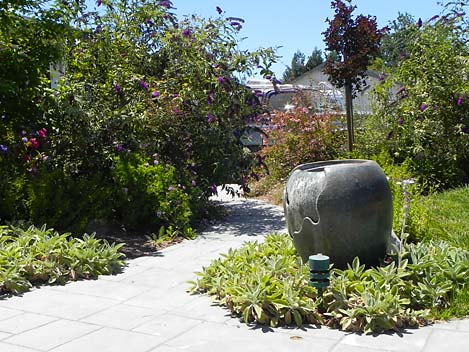
We can hide anything!Note the vehicle in the background. Screening via plants is a softer look than building fences.

Phormium tenax “Sundowner” (New Zealand flax) is a classic “accent plant” – it’s dramatic spiky form catches the eye and leads it down the path.



